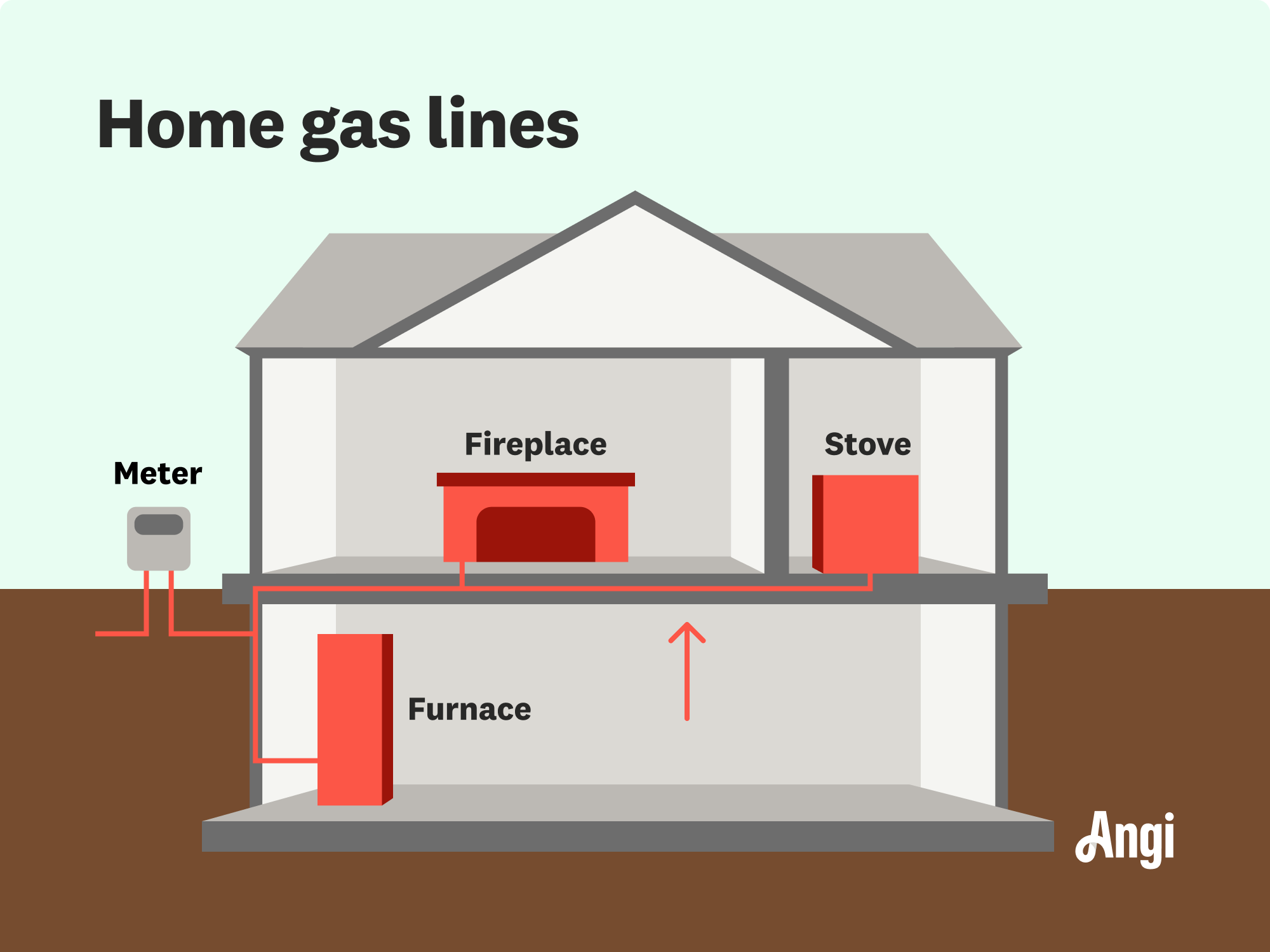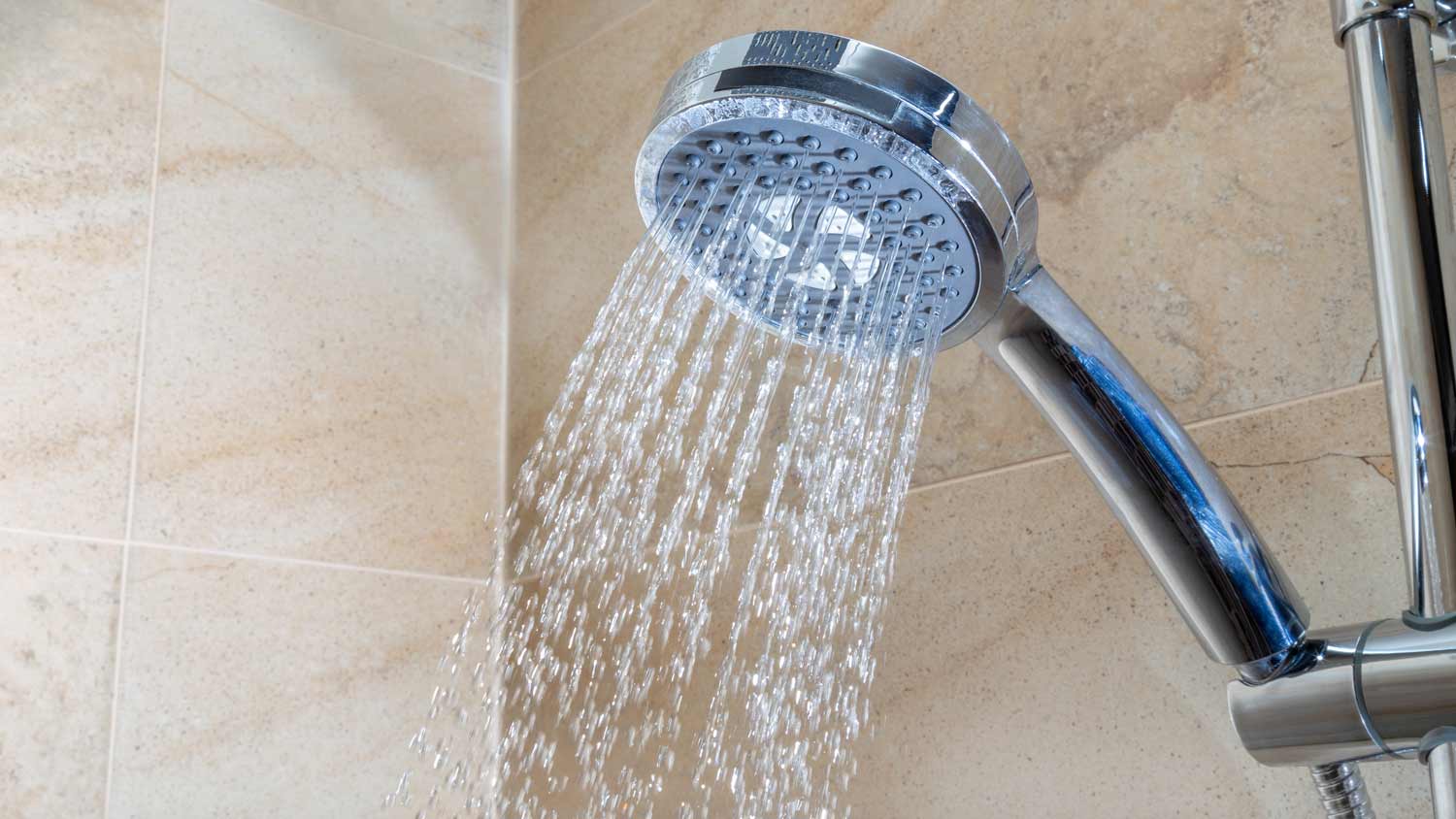
Repairing a main water line is an urgent matter, so use this guide to get an idea of how much main water line repairs cost to act fast.
Plumbing costs depend on your project and location. Check with a local pro for your specific job.
If you’re undergoing a renovation, you may need to move your gas line to accommodate your gas appliances.
Moving a gas line costs between $15 and $25 per linear foot, depending on the distance, labor, excavation, and permits.
The type of piping will also affect the cost of moving the gas line.
Natural gas is highly flammable, so this job should be left to qualified professionals.
The cost to move a gas line ranges from $15 to $25 per linear foot, with an average cost of about $375 to $750 for the whole project. Prices ultimately depend on how far you need to move the gas line and your reason for moving it (for example, ensuring your home is up to code or installing new appliances). Here’s how much you might expect to pay to relocate a gas line.
It costs between $15 and $25 per linear foot to reroute a gas line, including both materials and labor. If you’re undergoing a major project, such as converting your stove from electric to gas or upgrading an older home, the cost of moving a gas line will likely be higher due to the job size. On the other hand, smaller projects like extending a gas line for a new appliance will come with a lower price tag.

Let’s take a look at the main factors that affect the cost to move a gas line.
| Cost Factor | Average Cost |
|---|---|
| Materials | $1–$10 per linear foot |
| Labor | $75–$200 per hour |
| Permits | $50–$200 |
To move a gas line, you’ll need to purchase additional pipe materials. This involves knowing what type of gas piping to use, which is often based on your local requirements. These cost between $1 and $10 per linear foot. Here are the common pipe materials for gas lines:
| Gas Line Pipe Material | Average Cost (per Linear Foot) | Description |
|---|---|---|
| Black iron | $5–$10 | Standard for indoor gas lines |
| Flexible corrugated stainless steel tubing (CSST) | $2–$5 | Flexible piping, easy to install, popular for indoor installations |
| Galvanized steel | $3–$10 | Not often recommended because the zinc coating can flake off and clog appliances |
| PVC | $1–$3 | Only used for underground outdoor gas lines, often not permitted |
| HDPE | $1–$5 | Only used for underground outdoor gas lines |
You’ll also need to hire a local plumber to move the gas line. Labor costs an average of $75 to $100 per hour, although some master plumbers can charge as much as $200 per hour.
The cost of moving a gas line is impacted by its location. For example, kitchens and utility rooms tend to have more complex gas line configurations because of stoves, water heaters, furnaces, and other appliances. Moving a gas line in these areas requires navigating around existing plumbing, electrical, or structural components, increasing the total labor and cost.
Whether the gas lines are interior or exterior also matters. Interior gas line installation involves cutting into floors or walls, removing materials like drywall or tiles, and ensuring that the new line is safely installed within the house’s structure. All of this extra prep adds to higher costs. Exterior gas lines may involve some intensive prep work, like digging trenches, but they’re often less invasive to move.
The distance between the current gas line location and the new destination can also impact costs. Longer distances require more materials, additional labor hours for installation, and potentially more permits. Complex routes (like those with many turns) will also be more expensive. If you’re estimating cost based on distance, expect to pay around $15 to $25 per linear foot.
Naturally, longer distances require more pipeline, which will increase labor and material costs. The size (diameter) of a gas line also impacts the cost. Larger diameter pipes are more expensive than smaller ones, and installing them can be more labor-intensive.
Installing gas lines can get tricky when professionals encounter tight, hard-to-reach spaces. For example, they might need to work inside a cramped crawl space or snake a line behind a finished wall. These difficult conditions can increase the overall cost of the project. Along those lines, outdoor obstructions like trees, rocks, or concrete require more effort, leading to higher costs.
You will likely need a permit to move a gas line. Not having the proper paperwork in place beforehand can delay your project and result in possible fines. Permits for gas line relocation can cost $50 to $200, depending on the municipality.
Are you running an underground gas line? This often involves hiring an additional pro to excavate land, and possibly conduct restorative landscaping tasks. Excavating land to dig a trench costs $50 to $200 per cubic yard. Once your gas line is set up, you may need a local landscaper to redo parts of your yard or patio damaged by digging for an additional cost of $1,500 to $5,000.

Prepare to pay a local plumber around $75 to $100 per hour for labor, as this isn’t a job you can do yourself. Working with natural gas is incredibly dangerous, and pros are properly trained and certified to do it.
When moving a gas line, you should always work with a certified local plumber for these reasons:
Natural gas is highly flammable, and leaks can be difficult to detect without specialized tools and training.
Improper gas line installation poses serious risks to you and your family, including gas leaks, carbon monoxide exposure, fires, and explosions.
Professional plumbers are familiar with local building codes, permitting requirements, and safety regulations.
Gas line relocation may involve challenging conditions; for example, the line could be buried underground or located behind drywall or under floors, requiring specialized equipment.
DIY gas work can void your home insurance, warranties, and local compliance requirements.
Professionals can identify related issues, such as outdated piping, before it becomes a hazard.
Moving a gas line is a complex project that always requires a professional. Even so, there are ways to minimize costs, including the following:
Get quotes from at least three pros to compare prices. Don't automatically choose the lowest bid, which could indicate a lack of experience or subpar materials.
Schedule during a plumber’s off-season (like late winter or early spring) for better rates.
Consider bundling other plumbing work at the same time.
Ensure your contractor is planning the most straightforward route, avoiding unnecessary bends and turns, which may become costly.
You should never move a gas line yourself, but you may be able to tackle some prep work, such as ensuring the installation area is clear.
You also might handle cosmetic repairs yourself after the gas line is moved, such as repairing drywall and painting it.
Discuss which gas line material is safest and most cost-effective for your home.
Request a breakdown of the estimated project costs, including labor, materials, permit fees, and additional charges for accessing hard-to-reach lines.
Confirm the contractor will obtain the necessary permits.
See if your current gas appliances or connections need upgrades.
Home is the most important place on earth, which is why Angi has helped more than 150 million homeowners transform their houses into homes they adore. To help homeowners with their next project, Angi provides readers with the most accurate cost data and upholds strict editorial standards. We extensively research project costs to develop the pricing data you see, so you can make the best decisions for you and your home. We rely on reputable sources, including the U.S. Bureau of Labor Statistics, academic journals, market studies, and interviews with industry experts—all to ensure our prices reflect real-world projects.
Want to help us improve our cost data? Send us a recent project quote to [email protected]. Quotes and personal information will not be shared publicly.
From average costs to expert advice, get all the answers you need to get your job done.

Repairing a main water line is an urgent matter, so use this guide to get an idea of how much main water line repairs cost to act fast.

We’ll cover the cost of replacing a shower or bathtub drain, whether you can tackle this repair yourself, and what other projects to consider along the way.

A leaky faucet can lead to costly water damage and a lot of wasted water. Learn how much it costs to fix a leaky faucet based on type, part and labor.

Replacing or upgrading plumbing in your home? Make sure you know how to measure pipe size accurately to avoid buying the wrong materials.

Need to stop a plumbing leak quickly and minimize water damage in your home? Buy yourself some time with these temporary fixes for a leaking pipe.

Got a cold or weak shower? This easy-to-follow guide will help you explore different types of shower valves to keep your shower at the right temperature and pressure.